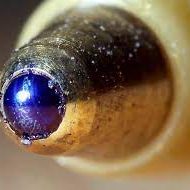Whilst I’m compiling my research question, I am thinking about who to interview and how I would frame my question. It’s important that I am aware of how I position myself in relation to 3D and 2D concerns as I have strong views about sculpture being more challenging than 2D artwork. The idea of positionality is a new idea to me, from reading ‘Thematic Analysis: A Practical Guide, Braun & Clarke 2021’ and I want to make sure that I am sufficiently aware of it when, as Braun & Clarke put it: ‘positioning myself in relation to my data set’. I will naturally want to extract certain quotes that illustrate my own agenda.
I currently have access to students across various pathways at Camberwell including designers and painters but I recognise that I also want to address the difficulties that I feel exist around making sculpture/3D work which makes the idea of having a comfort zone and going outside of it, more relevant to the sculpture students I intend to question. Of all the Fine Art disciplines, I think that it is using 3D to manifest an idea is the most challenging as you are progressing your work with all the technical and spatial considerations that come with bringing a sculptural idea to fruition.
I found an article (below) which I think makes some valid points about this and I like the analysis here and the description of the challenges of making pieces in real space. I’ve often thought that working in 3D is much more challenging than 2D.
Creating a sculptural object/installation/performance requires you to take on a whole space. You need to be a technician and an installer and to consider all aspects of how the piece interacts with its surroundings. This is also what makes it such a wonderful and exciting discipline, but it can be extremely challenging to take an idea from the initial sketch or idea into 3D which requires the leap out of your comfort zone which I am keen to explore. When you manifest a sculpture, it exists in very real way, there’s nowhere to hide! If it has failings they are very real and very much there in front of you and everyone else.
‘This premise has been argued by painters and sculptors, whether painting or sculpture is a ‘higher’ form of work and which is more difficult and/or praiseworthy. The best (but not very exciting) answer I can give to that speculation, is that some sculptures are better art than some paintings, and some paintings are better art than some sculptures.
Something to note though, is that the propositions (the idea the artist has brought out for the viewers’ experience) of sculpture and painting are somewhat opposite.
When a painting is looked at, the viewer is mentally entering a sort of window into a picture-space. Your brain sees the pigments, decodes that information as a space, and if you have any sort of imagination, you experience the image as though it was a sort of imaginary place you visit.
But. When you look at a sculpture, it exists in real space. You didn’t have to mentally travel into the experience at all, the sculpture has come to visit you, in your actual world. While a painting contains all of its own spacial context (the stuff around and between the things in the painting), the sculpture and you share a context, and, you yourself become part of the spacial context of a sculpture when you go to view it.
So these two types of experiences are kind of inside-out versions of one another.
I do both painting and sculpture, and while I love both and certainly both are challenging, I’d say that a good sculpture is more difficult to pull off than a good painting. Not really because it is physically more work (though it is) but because there is so much more in the world of things for a sculpture to compete with. If I may get a little poetic with my explanation, I’ll say it like this: painting can contain even the smallest, most simple room as its universe, and be complete. But a sculpture has to be complex enough in form to exist to the viewer as an entity in reality, or it fails.’
This article is an excerpt from a post on ‘Quora’ by artist Ry Beloin https://www.quora.com/profile/Ry-Beloin
This is a link to the article: https://www.quora.com/How-is-sculpting-more-difficult-than-painting
Looking for other discussions around this topic, I found an interview given to The Spectator by sculptor Anthony Gormley being interviewed by Martin Gayford about his book. In the paragraph below, the artist is talking about the spatial challenges of making an object compared to working in 2D and chimes with my experience that taking early steps with a sculpture practice is much more challenging. As soon as you move from the page of your sketchbook or from your imagination into 3D then you invite people to interact with your work in real space, with all challenges and excitements that this brings. I’m not sure that this will be a main focus for my research questions, but I will see if it also chimes with my participants.
AG: ‘The fundamental difference between sculpture and painting is that a sculpture changes the world instantly by bringing something into it that wasn’t there before. It’s that capacity to change, rather than reproduce, which arguably makes sculpture into the pre-eminent art. Sculpture asks the world to stand aside and give it a place, whereas painting depends on the wall. For much of its history, painting has been a window on to another world and thus dependent on a model. Objectively it’s weak; it needs a stretcher, a wall, a building — it needs shelter.
A painted surface has to have a support. Sculpture doesn’t. It can just be out there in the elements. Their effect on it, if it’s a good sculpture, will only improve it.‘
